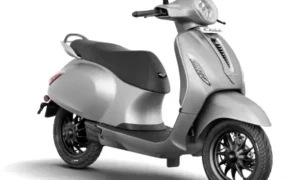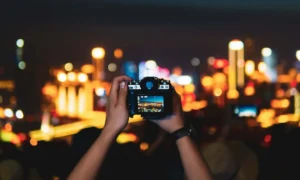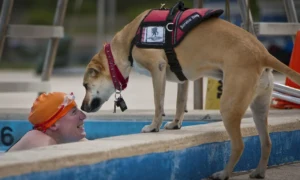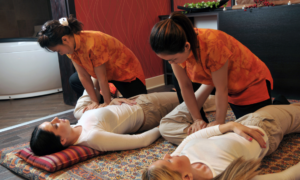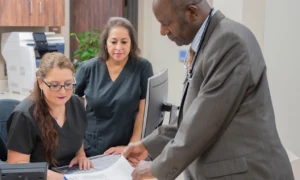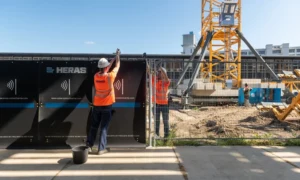Accident victims wonder, after sustaining injuries, “What evidence should I present?” When you take your case to trial, you hope to receive damages. However, you need relevant damages for the court to award you compensation. Hiring a personal injury lawyer could help present your case for a positive outcome. This article explains the necessary evidence and how you can protect it.
The Pertinent Physical Evidence
Physical evidence holds immense weight in personal injury cases. When you’re harmed in an incident, tangible evidence links to it, including clothing, equipment, tools, or even vehicles involved in the accident. Weather patterns can be understood through meteorological events and could be relevant evidence.
The physical evidence could provide crucial insights into the incident if the injury occurred on the road. For example, skid marks on the road may indicate attempts to avoid another vehicle or demonstrate how the accident unfolded. Similarly, broken glass from a window could indicate the severity of the impact. The weather conditions at the time, such as a tornado or hurricane, might have also played a role in causing or exacerbating the injuries.
Scene or Accident Evidence
Accidents often leave behind crucial clues and factors that can illuminate the incident’s circumstances. Weather conditions can be a significant factor that impacts the outcome of an accident. Factors like rain, snow, or fog can affect visibility and road conditions, potentially contributing to the accident. Additionally, other vehicles on the road can play a role in the collision.
Debris or items on the ground can also be vital pieces of evidence. Tripping over a poorly placed object, for example, could lead to injuries, and the presence of such objects at the scene can support your claim. Photographs of the accident scene, especially those taken immediately after the incident, can be crucial in capturing the conditions.
Skid marks on the road can reveal attempts to avoid a collision or indicate the speed and trajectory of the vehicles involved. These marks can help accident reconstruction experts determine how the accident occurred, thus establishing fault. The scene may sometimes provide evidence of negligence or hazardous conditions. For example, poorly maintained roads or traffic signs that are obscured or missing could be factors in the accident.
Presenting scene or accident evidence effectively in court can be complex. Still, with the support of leading lawyers in Anchorage, Alaska, you can ensure that your evidence is well-organized and compelling.
Documents for the Injury
Medical records are among the most critical documents in a personal injury case. These records provide a detailed account of the injuries sustained, the treatment received, and the prognosis for recovery. They provide concrete evidence of the extent of your injuries and the medical expenses incurred.
Insurance forms are other essential documents that outline your coverage and the compensation you are entitled to in the event of an accident or injury. Other crucial documents are bills, which include medical bills, therapy expenses, and costs for medical equipment or prescription medication. These bills indicate the financial losses you have suffered due to the injury.
Incident reports are official documents filed with authorities or relevant parties after an accident. For example, if you were involved in a car accident, the police report will provide details about the incident, including who was at fault. Incident reports can carry significant weight in court and can be instrumental in proving liability.
If you’ve experienced a loss of wages or income due to the injury, pay stubs or other relevant paperwork can help demonstrate the financial impact of the accident. Receipts and paperwork for repairing or replacing damaged property can also be relevant. For example, if your vehicle was damaged in a car accident, the repair receipts can be used as evidence of the property damage you suffered.
Witnesses Providing Testimony
Witnesses are individuals who were present at the accident scene or were directly involved in the incident. Their accounts of what they saw or experienced can provide valuable insights and corroborate your version of events.
Witnesses may include bystanders who saw the accident, passengers in the vehicle with you, or individuals who interacted with you immediately before or after the incident. Their perspectives can help paint a comprehensive picture of the accident and the circumstances leading up to it.
In some cases, witnesses may have expertise or knowledge that adds weight to their testimony. For example, a medical professional who witnessed the aftermath of a car accident could provide valuable insights into the nature and severity of the injuries sustained.
Witness statements can be recorded in various ways. Some witnesses may provide written statements, while others may speak on the record during a deposition. Additionally, some witnesses may testify in person during a trial, providing their account under oath.
Photos and Video
Visual evidence, such as photographs and video footage, can be incredibly impactful in a personal injury case. With the support of leading lawyers in Anchorage, Alaska, you can effectively utilize photos and videos to enhance the strength of your claim.
Photographs taken at the accident scene or shortly afterward can provide a clear visual record of the conditions. They can capture the position of vehicles, the presence of debris, and the extent of property damage. Photographs of injuries sustained can also demonstrate the severity of the harm suffered.
In addition to still photos, video footage can be even more compelling. Video recordings from surveillance cameras, dash cams, or cell phones can capture the accident as it unfolds. Such footage can show the opposing party’s actions, reveal reckless behavior, or provide evidence of negligence.
One of the significant advantages of visual evidence is its ability to provide an unbiased account of the incident. Photos and videos present the facts as they occurred, leaving little room for interpretation. This objectivity can be crucial in countering any disputes or attempts to misrepresent the events.
Preserving Evidence
Once you’ve collected all the necessary evidence, taking steps to preserve it becomes crucial. This applies to various types of evidence, including photographs, videos, physical objects, and documentation.
Making backup copies of photographs and videos and storing them securely is essential to ensuring their integrity. Keeping multiple copies of visual evidence on different devices can prevent loss due to technical failures or accidents.
Physical evidence, such as damaged property or objects involved in the accident, should also be preserved in a secure location away from tampering. In some cases, involving expert witnesses or specialists may be necessary to properly preserve and document physical evidence.
Documentation, such as medical records, insurance forms, and receipts, should be organized and kept safe. Witness statements, whether written or recorded, should also be preserved with care. By preserving evidence, you ensure that it is admissible in court and can be effectively presented to support your claim. This attention to detail can significantly strengthen your case and increase your chances of obtaining fair compensation for your injuries and losses.
Proving a personal injury case requires careful consideration of the evidence at hand. Physical evidence, scene or accident evidence, documents, witness testimonies, and visual media are essential in building a compelling case. By enlisting the help of experienced lawyers, you can ensure that your claim is presented coherently and convincingly, increasing your chances of a successful outcome.


